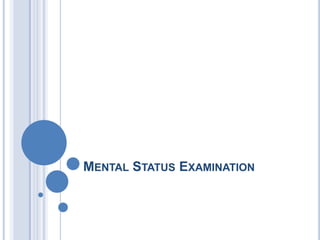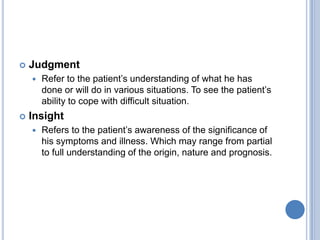The document describes a comprehensive mental status examination evaluating consciousness, attention, behavior, language, thought processes, memory, and insight. It categorizes various levels of consciousness, types of attention and concentration tests, and detailed assessments of mood, affect, cognition, and memory functions. Specific clinical observations and tasks are outlined to assess cognitive and perceptual abilities across different brain regions.


























